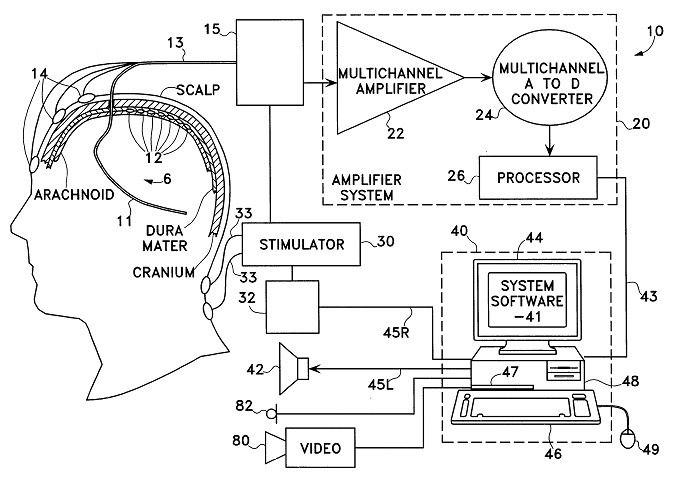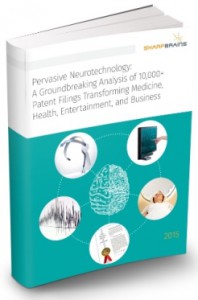Monitoring neurological activity to detect epileptic seizures: Key Neurotech Patent #9

– Illustrative image from U.S. Patent No. 6,473,639
—–
Today we are sharing a 2002 patent assigned to Neuropace, Inc. (As mentioned, we are featuring a foundational Pervasive Neurotech patent a day, from older to newer by issue date)
U.S. Patent No. 6,473,639: Neurological event detection procedure using processed display channel based algorithms and devices incorporating these procedures.
- Assignee(s): Neuropace, Inc.
- Inventor(s): David R. Fischell, Jonathan Harwood, Benjamin D. Pless
- Technology Category: Neuro-monitoring
- Issue Date: October 29, 2002
SharpBrains’ Take:
The ‘639 patent discloses techniques for detecting neurological activity, namely the occurrence of an epileptic seizure based on algorithmic processing of signals measuring brain activity. More specifically, the system discerns neurological activity by considering brain signal activity based on the location of placed electrodes from which brain signals originated, parameters used in processing the signal and a parameters for detecting the event’s occurrence that are unique to the patient. Despite some implantable embodiment and claims that might appear to have a high word count, the scope of many claims (e.g., independent claims 1 and 36) have broad coverage over non-invasive and customizable electrode-based detection of neurological activity. The broad claim scope, coupled with the application’s nearly 200 forward citations, make the ‘639 patent a key non-invasive neurotechnology patent.
Abstract:
This invention relates generally to information processing techniques used in the treatment of epilepsy and to devices for using these techniques.
Illustrative Claim 1. A device for detection of neurological event activity in a patient’s brain comprising:
- at least one brain electrode configured to monitor brain electrical signals and produce an output, each said brain electrode being positionable to a position relative to a patient’s brain,
- at least one processed display channel processor configured to produce at least one processed display channel, said at least one processed display channel being a signal produced by signal processing by said at least one processed display channel processor, of a digital signal related to said output from said at least one brain electrode, the signal processing having one or more parameters;
- a neurological event detector configured to process the at least one processed display channel with at least one detector algorithm to detect neurological event activity based upon
- i.) the brain electrical signals received by the at least one brain electrode,
- ii.) the position of each brain electrode,
- iii.) the parameters of the signal processing used to create the at least one processed display channel,
- iv.) and at least one detector algorithms having at least one detector parameter customizeable for each patient.
 To learn more about market data, trends and leading companies in the digital brain health space –digital platforms for brain/ cognitive assessment, monitoring and enhancement– check out this market report. To learn more about our analysis of 10,000+ patent filings, check out this IP & innovation neurotech report.
To learn more about market data, trends and leading companies in the digital brain health space –digital platforms for brain/ cognitive assessment, monitoring and enhancement– check out this market report. To learn more about our analysis of 10,000+ patent filings, check out this IP & innovation neurotech report.


